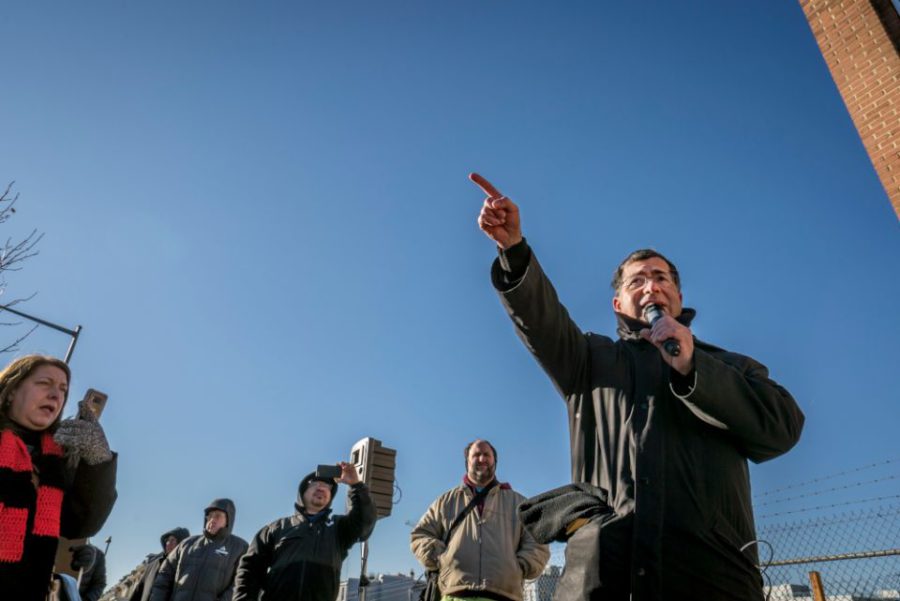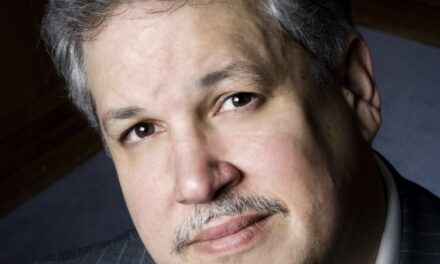- In your previous interview, you pointed out how Bishop Zurek of Amarillo contradicted himself by telling you in a meeting that he would never want you out of the priesthood, and then sending you a letter shortly after that requesting that you seek dismissal from the priesthood, or else he would request it. How did you respond?
I responded by telling him “No.”
I made it clear that the priesthood is my vocation, and that I have never had a moment’s doubt about that. I told him, therefore, that I would in no way seek to be released from the clerical state.
Over all these years, I have made it clear to him and everyone else that I have made a commitment to live as a priest and also a commitment to devote all my time and energy to defending the unborn from abortion.
If Church authorities want to say that these two things are incompatible, that is their business. But I will not go back on either one of those commitments.
As the months went on, I was not told one way or another whether he followed through on his threat to request the Holy Father to dismiss me from the priesthood. This was in 2017.
I do know that various bishops and Cardinals told the responsible authorities that such a thing should not happen. Alveda King also wrote a letter to the Pope about the matter, and the Priests for Life Board of Directors wrote a strong letter to Bishop Zurek as well.
- So in the midst of this, two other things were still unresolved – the penalty for the political video of the aborted baby, and the request to be transferred from the Amarillo Diocese to the Colorado Springs Diocese. How did these matters get resolved?
We made use, once again, of the procedures that the Church provides for defending our rights, and appealed the bishop’s actions to the Congregation for the Clergy.
We requested that the bishop’s penalties be dismissed and that I be authorized to transfer to Colorado Springs so that I could work with a more favorable bishop. The Congregation for the Clergy agreed to take the case and look into it.
In the course of working this out, the Congregation for the Clergy had called for a meeting of my team with team and Bishop Zurek. Fr. David Deibel flew to Rome for the meeting to represent me. Bishop Zurek said he would join by phone. When Bishop Zurek got on the phone, he asked to speak to the Cardinal in charge of the Congregation for the Clergy, and asked that my canonical advisor leave the room.
Fr. Dave waited outside the room. Bishop Zurek proceeded to yell and carry on in his complaints about me. After this, the officials came out of the room and told Fr. Dave that there would be no meeting.
The Congregation ended up ruling in my favor and granted my request, declared that I was free of the penalties Bishop Zurek had imposed, and authorized the transfer to Colorado Springs. That was by means of a decree dated November 11, 2019 (Congregation for the Clergy, Prot. N. 2019 4532). It was explained to the public by one of my canonical consultants.
We welcomed this as a great victory, of course.
- So did the transfer happen?
No, it did not.
Once the decision was issued, I asked how quickly it could be announced to the public so that we could finally clear our good name and resolve any lingering confusion about who I report to and whether I was in their good graces.
But I was told that before this could happen, Bishop Sheridan and I had to reach “an agreement.”
My response was that the agreement was that Bishop Sheridan would be my bishop, and that he would give me my assignment. The understanding between us was that I would continue to live out my calling as a priest who, as National Director of Priests for Life, devotes my ministry to defending the unborn. That was the understanding. That work would include time in the diocese, of course – and the bishop was ready to give me special pro-life responsibilities in the diocese, especially since their previous director of pro-life activities had recently passed away.
But then I was told that the “agreement” that had to be reached with the bishop had to include the agreement of Bishop Zurek. I was told also that the Congregation for Clergy wanted me to spend a significant portion of my time in the Diocese of Colorado Springs.
If I were to do that, of course, I would not be able to carry out the service I have been giving nationwide in my traveling, speaking, and ministering to the pro-life movement.
Bishop Sheridan and I did hammer out an agreement that we thought was workable and incorporated everyone’s concerns. He went to Rome and met with the Congregation for the Clergy, but they did not approve the agreement, for reasons that were never explained to me.
- So what did you do next?
I did what I had been doing all along – I continued my work, serving priests, deacons, seminarians, and pro-life activists all over the country.
Meanwhile, Bishop Sheridan was approaching the mandatory retirement age of 75.
We were also approaching the elections of 2020. A key issue in the elections was the Supreme Court, and the pro-life movement well understood that keeping President Trump in office was necessary not only to securing pro-life victories in the Supreme Court but also to protecting the freedom of the Church, which Priests for Life and many Catholic dioceses, schools, religious communities and organizations had to defend – all the way to the Supreme Court – against the Obama/Biden administration.
I was asked to serve on the Board of Catholics for Trump as well as to be the National Co-Chair of Pro-life Voices for Trump. I gladly accepted both roles, in which, for instance, I would lead the rosary on weekly prayer calls for Catholic campaign volunteers, and would give inspirational talks to them about the meaning of various liturgical feast days as the election year progressed. It was priestly activity, and I brought many other priests on to these calls to help lead these prayers.
- Did the bishop object to your political involvement?
Yes, he complained to the Vatican about it.
Now I had issued a public letter to all the bishops, and also requested permission privately, to make use of the provision that Church law does provide for a priest to be specifically engaged in politics, because sometimes the defense of the Church and basic human rights (like life itself) requires it.
I received no response.
Then my canonical team in Rome said that the Congregation for the Clergy asked me to resign from the “Catholics for Trump” board because priests are not supposed to have an active role in politics.
Now interestingly, the Catholic News Agency had asked me, prior to this request, whether my involvement in the Trump Campaign violated Canon law – and they cited to me the specific canon, with which I was very familiar.
I explained my position as outlined in the open letter.
Then one day at the Congregation for the Clergy, one of the top officials showed my canonical advisor an article from the same Catholic News Agency that showed my participation in the Trump Campaign’s advisory boards. These advisory coalitions had a website, and my name and photo were on them.
Both the Trump Campaign and I willingly and quickly complied with the request of the Congregation for the Clergy, because both the Campaign and I respect the norms of the Church and saw no problem if I didn’t have an official title or position as an advisory board member. The Campaign and I both knew that I would continue to be vocally supportive of President Trump, and that I would continue to be an invited guest at meetings with election volunteers, lead prayers, provide reflections and so forth.
In fact, I increased my involvement in these activities.
When the Congregation for the Clergy heard that I had complied with their wishes, they expressed quite a bit of joy and gratitude to me.
Interestingly, as soon as I communicated to the Congregation for the Clergy that the Trump Campaign removed my photo and name from the advisory coalition website, I got a call from the Catholic News Agency about the fact that my name and photo had been removed from that website.
Then they and various Catholic and other media began reporting that I had “resigned from” and “stepped away” from the Trump Campaign.
I made clear in various interviews that this was not to be seen as distancing myself from President Trump or in any way changing my support for his re-election.
But headlines and soundbites have a power of their own, and that is the impression that was created.
Furthermore, it should be noted that my canonical advisors told me that the Congregation for the Clergy kept using the threat of “dismissal from the priesthood” if I did not comply with this request to not be on the Campaign.
I made it clear to them that I would not in any way change my message. President Trump needed to be re-elected, for the sake of the defense of life, the freedom of the Church, and the good of America.
And I did not change my message. I only intensified it.
So now the joy at the Congregation for the Clergy turned to displeasure, despite the fact that I had fulfilled the specific request I had been given, verified it for them, and received their gratitude.
As a result, Bishop Zurek complained to them again about the support that the most visible pro-life priest in the USA was giving to the most pro-life President of the USA.
And I was told again that they are initiating the process for dismissal from the priesthood.
After all the abuse by Bishop Zurek, I have made it clear that I am not willing to meet with him. All my advisors, legal and otherwise, have told me not to meet with him. But the Congregation for the Clergy wants me to meet with him so that he can tell me how they want to proceed in this matter.
Meanwhile, I have other bishops that would be willing to receive me as one of their priests and to whom I would be willing to transfer.
I told them that this matter is going to be decided by the People of God.














